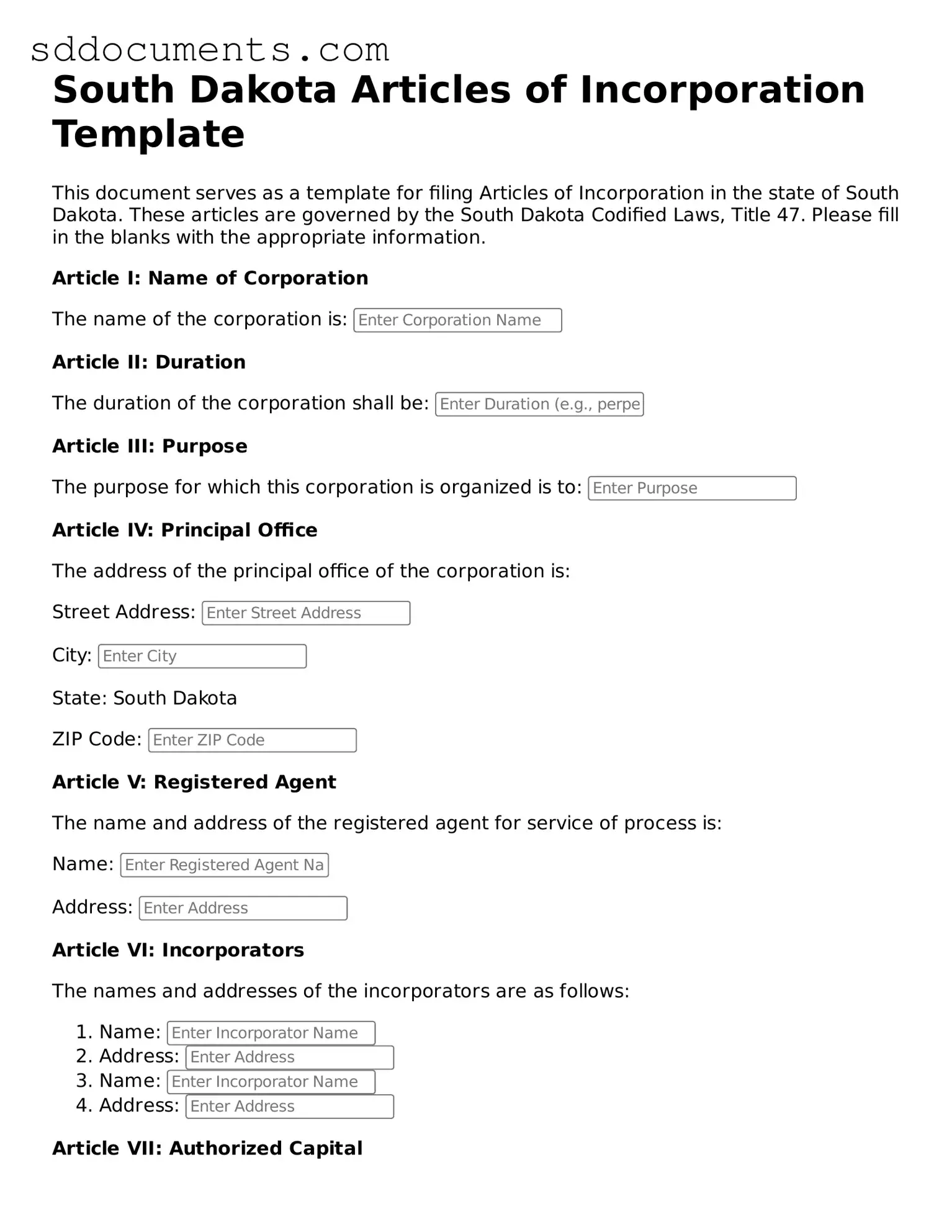Free Articles of Incorporation Template for South Dakota
The South Dakota Articles of Incorporation form is a legal document that establishes a corporation in the state of South Dakota. This form outlines essential details about the corporation, including its name, purpose, and structure. Completing this form is a crucial step for anyone looking to start a business in South Dakota, so take the next step by filling out the form below.
Customize Document Online
